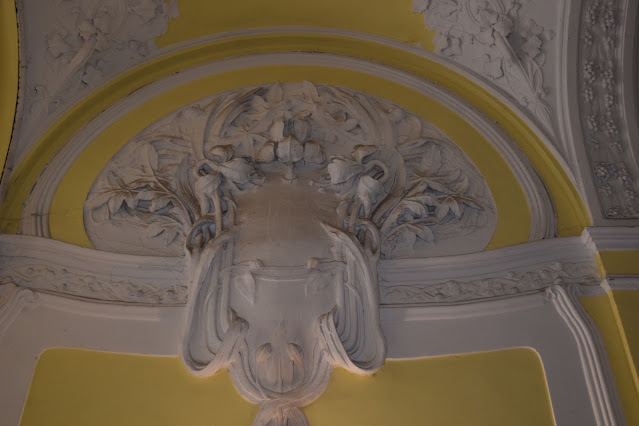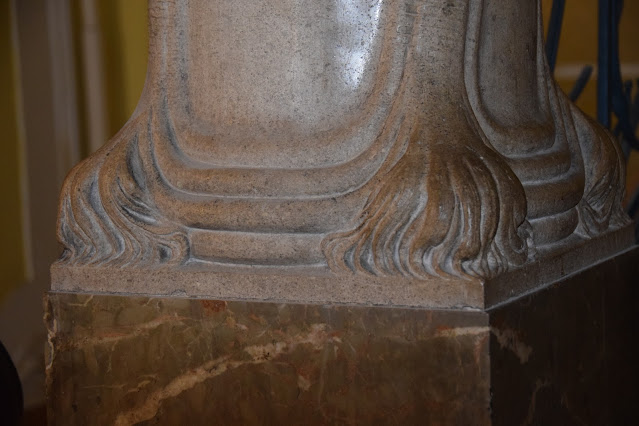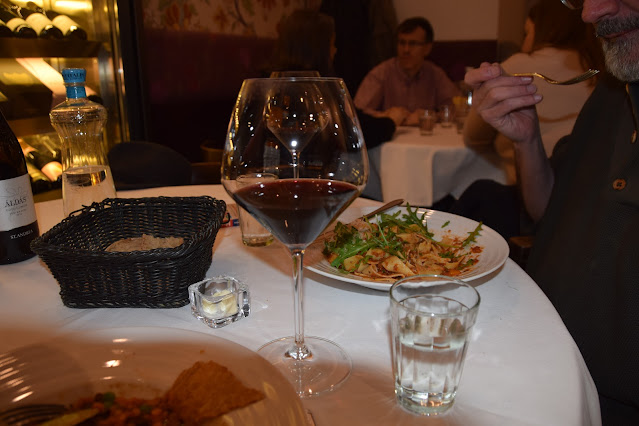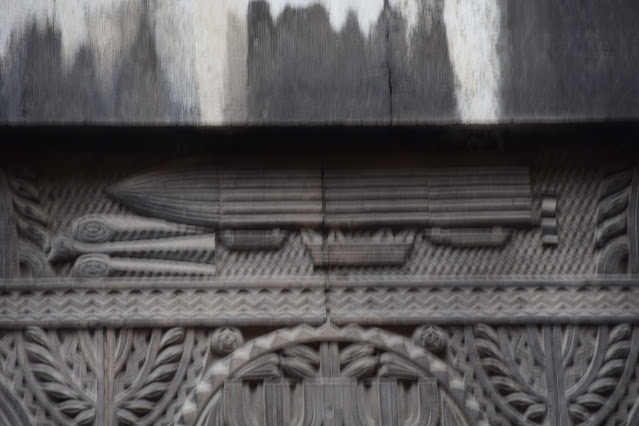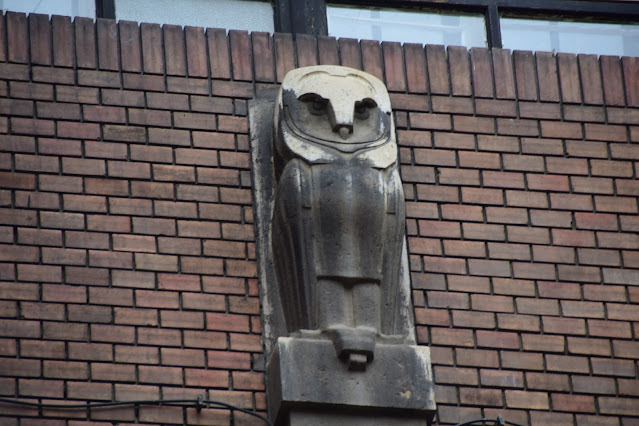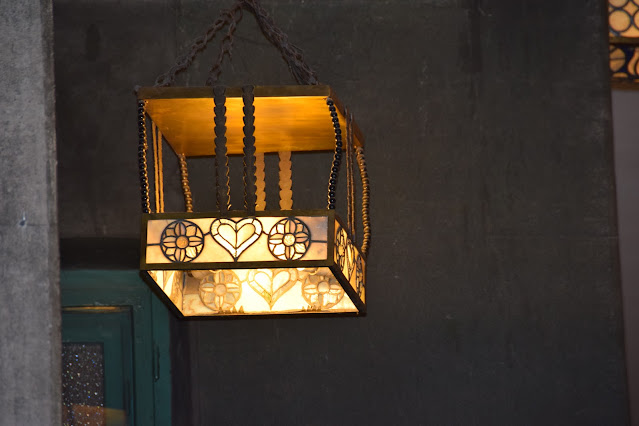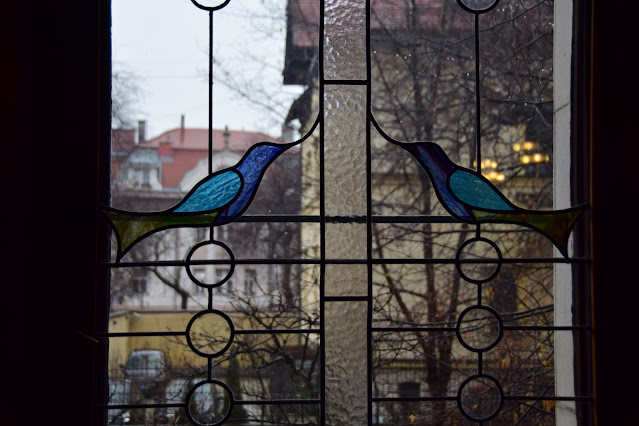Squirrels, birds feeding their young, frogs, rabbits, peacocks (So Art Nouveau), and even a snake One could (and has) looked at it many time and continue to find details.
Almost every time I go by this building, I tell Tony how much I wish I could see inside,
Well, I was taking photos the other day (and trying to peek inside), when someone came out of the building. I asked if I could step inside and take a photo and to my absolute shock she said yes. So here it is. Beautifully organic in so many ways.
From the flowered tile made to resemble a carpet.
The stairway column, carved to look like its growing out of the building.
And the railings that look like twigs.
The room is like a bower.
#WalkoHaus
#AlbertKalmanKorossy
#ArtNouveau
#Budapest
#Klassz












